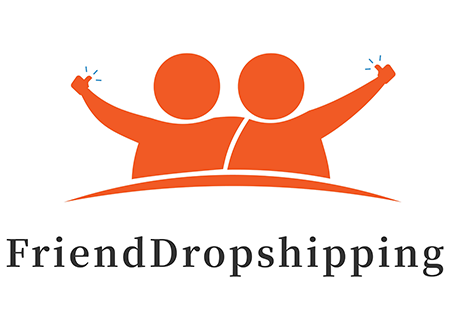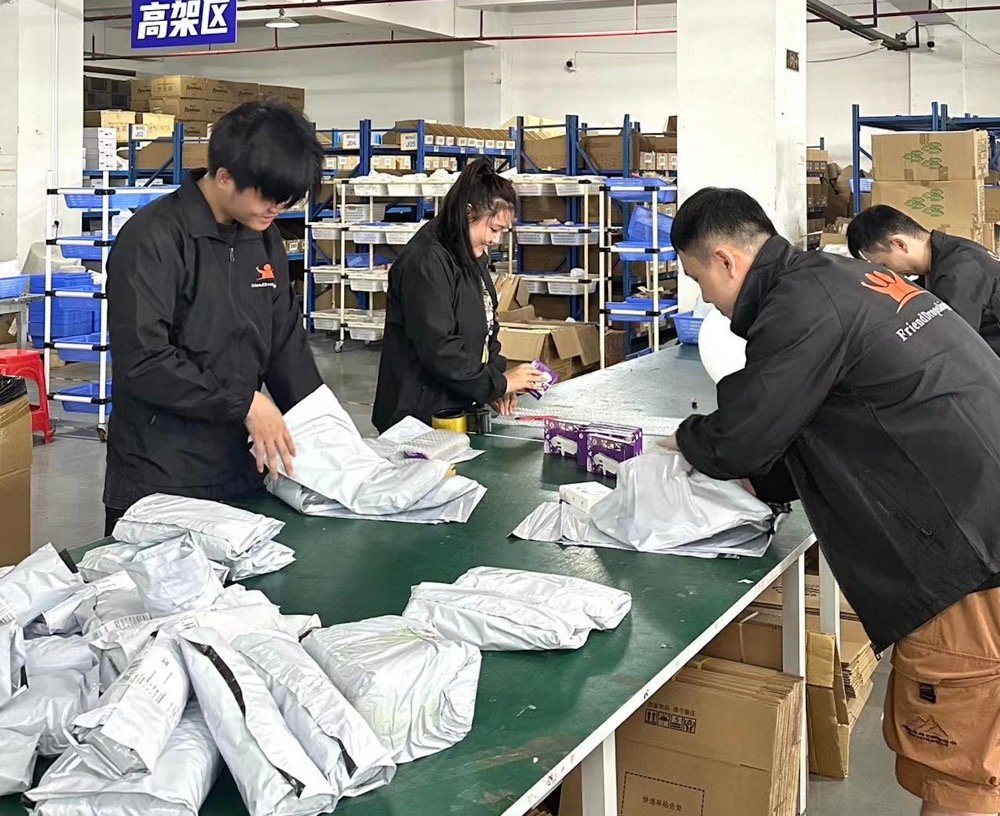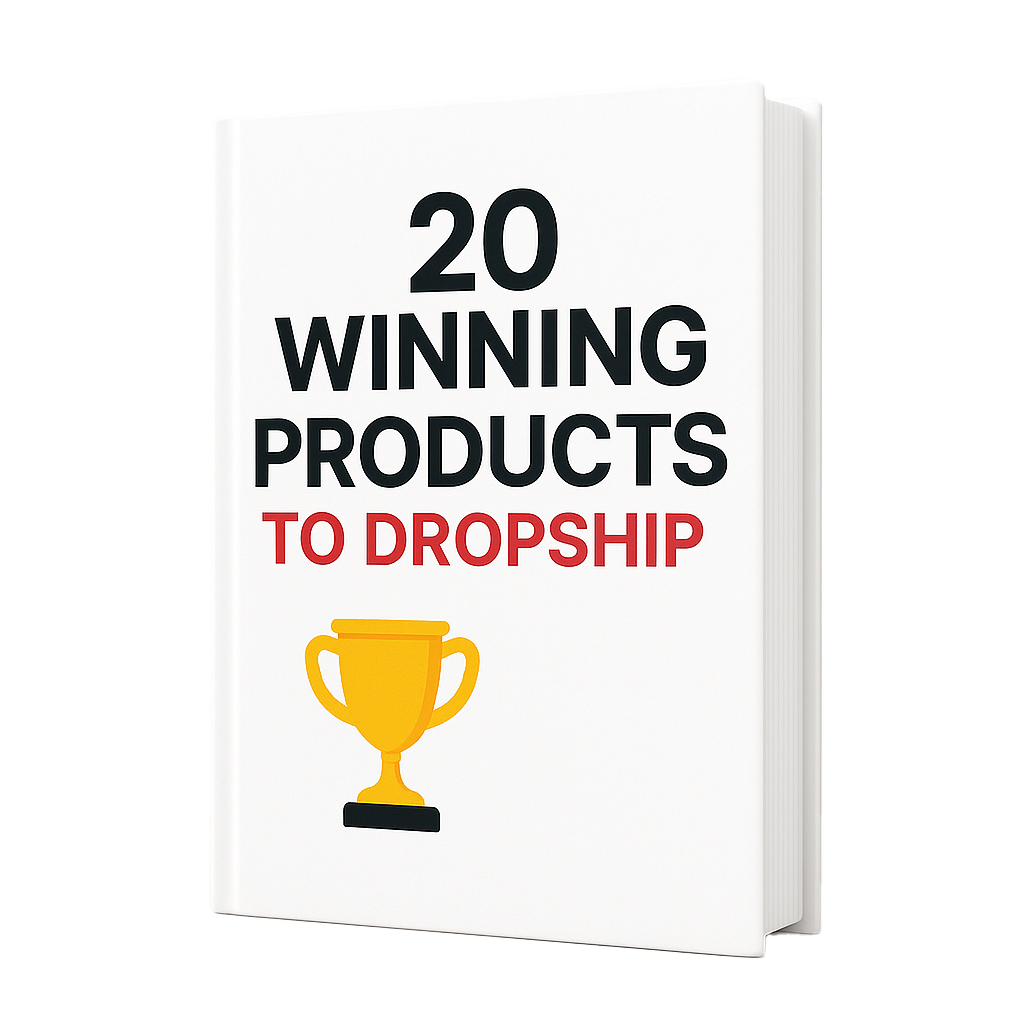Table of Content
1. Introduction
For many years, I have helped my clients find the right dropshipping supplier for them. Every time I need to select 1-2 suppliers suitable for customers from 3-10 suppliers. I have a lot to express regarding the selection of suppliers. About picking suppliers, I’ve got some tips to share, and these will help you a lot.
Finding reliable and trusted suppliers is very important if you want to succeed in the dropshipping field. These things can kind of shape how we figure out who our customers are and how we can make them really stick with us – but, like, not all of them will have the same level of impact.

After spending so many years in the industry, I’ve become both a doer and a sharer, so I really get this topic inside out. So, in this article, I’m excited to spill the beans and give you the lowdown on spotting and teaming up with suppliers you can really count on. Hope you can benefit from it!
2. What is Dropshipping?
Let’s first understand the basic concept of dropshipping. Dropshipping, it’s like this cool move in the direct selling game. Retailers can sell stuff without the whole inventory hassle. Instead, retailers send customer orders and shipping details to wholesalers or suppliers, who then deliver the products directly to the customers.
Retailers can pocket some cash by playing the pricing game – they make money from the gap between what they pay wholesale and what they charge retail. In other words, as a retailer, you only need to focus on increasing your brand awareness and customer engagement, without worrying about product quality and logistics issues, because these are handled by your chosen supplier.

I have helped my clients source products from China and package them for shipment all over the world. For example, I once helped my client purchase a popular smartwatch. My client only needs to do their own retail work, and I will do all the other tedious services.

Dropshipping has many advantages for you as a retailer. you don’t have to pay for inventory or worry about losing money if the products don’t sell.
You also don’t have to deal with shipping and delivery, which can save me a lot of time and money. So, like, the deal is, you can put all your energy into marketing and pushing your stuff out there.
The more you sell, the more you make – it’s all about stacking up that sweet profit. Totally, dropshipping isn’t all rainbows and unicorns. You gotta deal with stuff like hunting down trustworthy suppliers, keeping customers happy, and going head-to-head with other sellers out there.
But I’ve totally cracked the code on tackling these hurdles. I’ve dived into research, forged tight bonds with my suppliers, and gone the extra mile to serve up top-notch customer care. It’s like leveling up in the dropshipping game.
It’s like turning roadblocks into stepping stones. Here’s the deal – before teaming up with any suppliers, I’m all about peeking at those reviews and scores. And I’m not shy about keeping the convo going with them.

I make sure they’re right on the money with delivering the goods on time and in tip-top shape. Gotta keep that quality on lock. I also respond to my customers’ questions and feedback promptly and politely, and offer them discounts or freebies if they are not satisfied with their purchases. These are some of the ways that you have made dropshipping work for you.
To sum up, dropshipping is a way of selling products without having to keep inventory or deal with shipping. This approach can be a total time and money saver, freeing you up to go all-in on marketing and getting your stuff out there. Yet, let’s be real, there are hurdles to clear too. Like the quest for solid suppliers, the juggling act of keeping customers happy, and going toe-to-toe with other sellers. That’s why you need me as your supplier.

I have been in this business for many years, and I know how to provide you with high-quality products, fast delivery, and excellent support. I can also help you promote your products better, by giving you tips, feedback, and recommendations. I am not just a supplier, I am your partner. We work together to make your business grow and succeed.
Now that you know why dropshipping is a great option for you, and why I am the best supplier for you, let me show you how to choose a supplier.
3. Industry and Niche Research
Snagging a niche that’s both lucrative and intriguing is the cornerstone of your dropshipping plan. A niche is a small and specific group of customers who have a common need or problem that you can solve with your products. When you zero in on a specific niche, you can laser-focus your marketing mojo and really shine amidst the crowd. It’s all about making your mark in a unique way.
To find the right niche for your products, you can follow these steps:
Assess your interests and skills. You can choose a niche that gets your heart racing and where you know your stuff inside out. So, you’re not only having a total blast doing what lights your fire, but you are also dishing out some serious goodness to your incredible customers. It’s a win-win situation. For example, you love traveling and photography, so you decided to sell travel accessories and camera equipment on your website.

Research trends and gaps in markets.
You’re all about diving into tools like Google Trends, Amazon Best Sellers, and AliExpress Hot Products. These tools are like your undercover agents, sneaking around and revealing the trendiest and most sought-after products in various markets. It’s like having a crystal ball for what’s buzzing. You also look for gaps or problems that are not well-solved by existing products and try to find solutions for them. For example, you noticed that many travelers struggle with packing their clothes efficiently, so you found a supplier who sells vacuum bags that can compress clothes and save space.
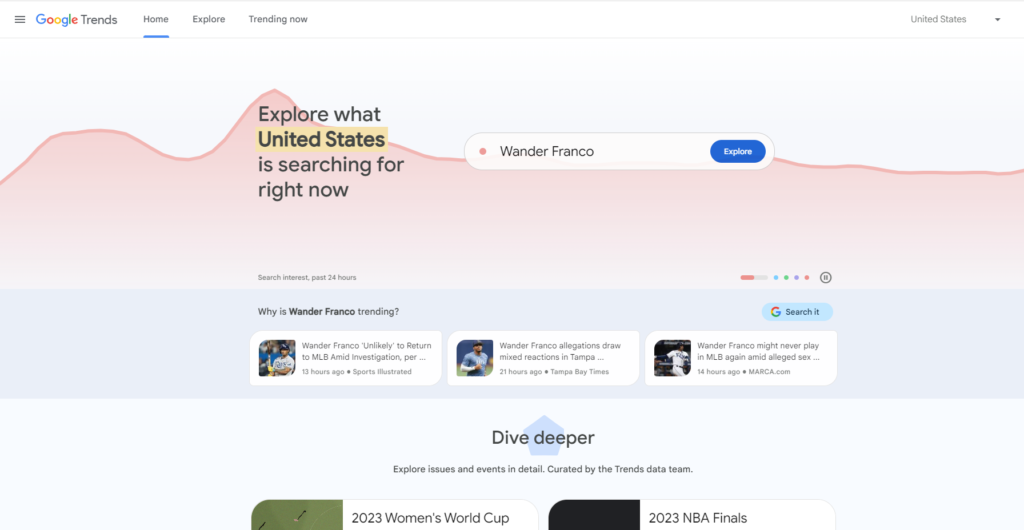
Define your target audience.
You get down to business by crafting a customer profile that spills the beans on who your dream customers are – their wants, hobbies, and how they roll online. It’s like painting a vivid picture of you. You roll with tools like Facebook Audience Insights, Google Analytics, and SurveyMonkey to scoop up data and hear straight from the horse’s mouth – your potential customers.
For example, you found out that most of your customers are young adults who like to travel solo or with friends, who value convenience and quality over price, and who use social media and blogs to find travel tips and inspiration.
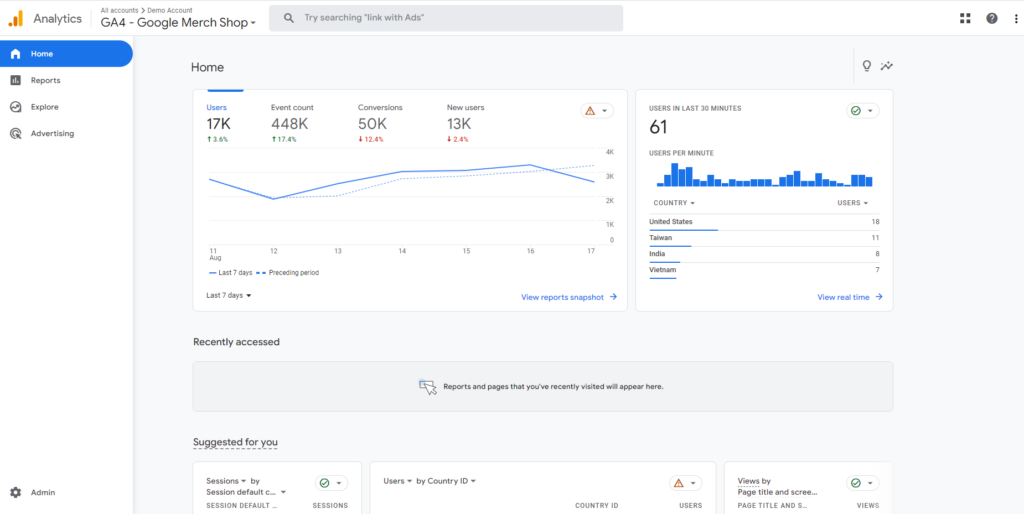
Analyze competition and unique strengths.
You need to dig into who’s playing in the same sandbox as you, what goodies they’re peddling, how they’re shouting about it, and where they’re shining or stumbling. You’ve got this awesome toolbox with tools like SimilarWeb, SEMrush, and Ahrefs. Think of these tools as your digital Sherlock Holmes crew, carefully dissecting your competitors’ online strategies and SEO game plans.
You put on your thinking cap and brainstorm ways to outshine the competition – whether it’s through top-notch products, killer prices, exceptional services, or a brand that’s like a breath of fresh air.
For example, You found out that one of your competitors sells similar travel accessories as you, but they have poor customer service and slow delivery. So you went ahead and made a call to offer some perks – think free shipping, lightning-fast delivery, and a solid 30-day money-back guarantee – all on the house for your awesome customers.
Check keyword demand and profitability. You use tools like Google Keyword Planner, Moz Keyword Explorer, and Ubersuggest to find out what keywords your customers use to search for your products online, how much traffic and competition they have, and how much they cost to bid on ads.
You also need to calculate the profit margin for each product by subtracting the cost of goods sold (COGS) from the selling price. For example, you found out that the keyword “travel vacuum bags” has a high search volume and low competition, and that you can sell each bag for $10 while buying it for $2 from your supplier.
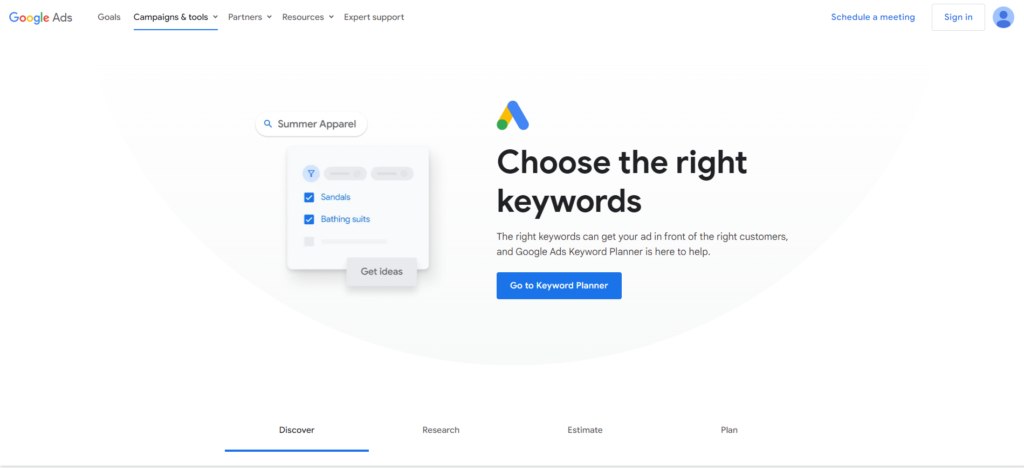
Ensure long-term passion and commitment.
We are all about playing the long game in dropshipping. You make sure you’re not just into your niche for a quick thrill, but you’ve got that long-term passion going strong. You make sure you’re always in the loop with what’s hot and happening in your niche. Plus, you’re like a treasure hunter, constantly on the hunt for fresh products and cool ideas to dish out to your customers. You are all about that customer love! You’re not just hanging around – you’re in the mix, creating stuff they’ll dig, being there to tackle their questions, and being all ears for their thoughts. For example, you’re out there crafting these killer blog posts filled with travel wisdom, diving into comments and messages on your social media turf, and even dishing out surveys and newsletters to your email buddies.
Test and validate your niche idea.
Before you launch your website or run any ads, you test your niche idea by creating a landing page or a mockup website that showcases your products and value proposition. You can use tools like Shopify or WordPress to create these pages easily. Then you drive some traffic to these pages using paid or organic methods, such as Facebook ads or social media posts. You use tools like Google Optimize, Bing Clarity, and Hotjar to peek behind the curtain and see how many folks are clicking on your products or jumping on your email bandwagon. If the results are positive, then you proceed with launching your website or running more ads. If not, then you tweak or change your niche idea until it works.

Stay adaptable and open to adjustments.
Even after finding a successful niche idea, you don’t stop there. You always need to monitor the performance of your website and products using tools like Google Analytics or Shopify Dashboard. You also keep an eye on market changes and customer feedback using tools like Google Alerts or Trustpilot. You use the data and insights you gather to improve your products, prices, services, or marketing strategies, and you experiment with new products or niches to expand your business or diversify your income.
For example, you recently added a new product category of travel books and guides to your website, after seeing that many of your customers are interested in reading about travel.
These are the steps that you can use to find and validate your niche ideas for your dropshipping business.
4. Dropshipping Wholesale Websites
After you’ve nailed down your niche, the next step is locking in some rock-solid suppliers who can dish out the goods you’re all about selling. There are many platforms where you can search for suppliers, but some of the most well-known ones are AliExpress, Frienddropshipping, SaleHoo, Worldwide Brands, and Wholesale Central. Each of these platforms has its own features and benefits, depending on what kind of products and suppliers you are looking for. I have summarized these platforms for you:
4.1 AliExpress

AliExpress is a B2C platform belonging to Alibaba Group.
Within this platform, you’ll find an extensive assortment of goods, ranging from apparel and electronics to items for your home and garden. You can see all categories here.

It is like a hypermarket, you can find products in it, and your competitors can also find the same products as you.
Nonetheless, it does come with certain downsides, including lengthy shipping durations, variations in product quality, and a limited level of customer service. For example, one of my clients once ordered some wireless headphones from AliExpress, but they took more than a month to arrive, and they were broken when She received them. The seller did not respond to her messages or refund her money.
If you want to do long-term business, you can find real suppliers, otherwise, it’s hard to compete.
4.2 Frienddropshipping
Frienddropshipping steps up to the plate by finding factories that suit your product needs and preferences. Moreover, we’ve got your back when it comes to tweaking products to fit your style and making sure you’re getting the most value for your money.
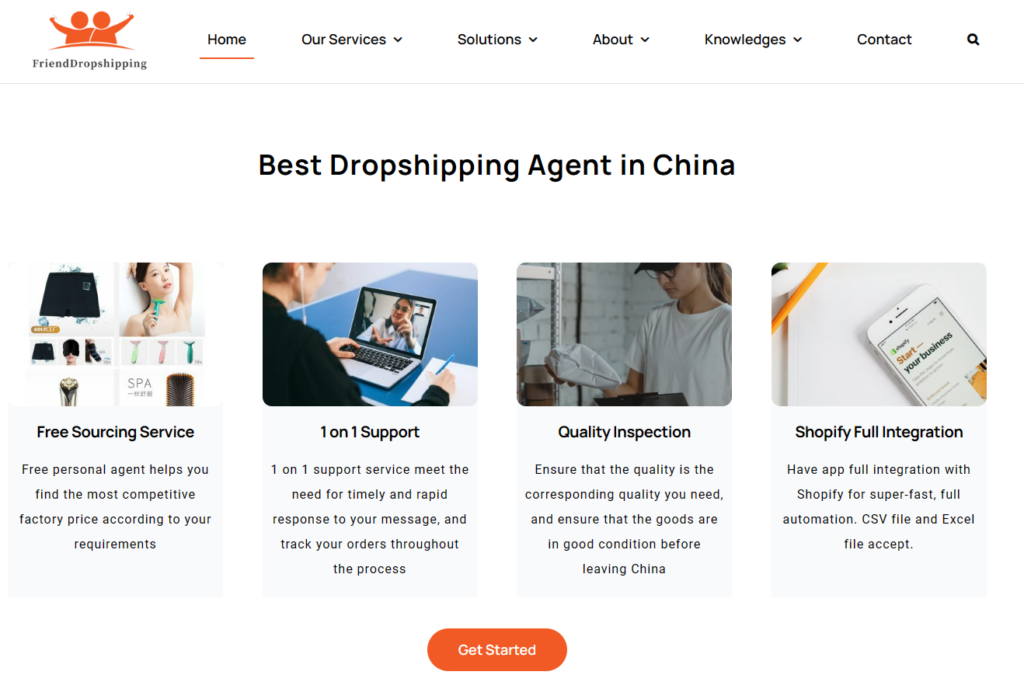
We go all out with strict factory checks to make sure the products are up to snuff and meet the set standards for quality.
We will also strictly inspect your goods before helping you ship them.
We update the order status in real-time, letting you know the progress of the order at any time.
We arrange courier companies to deliver the product directly to your customers’ doorstep, without you having to worry about logistics issues.
We can save you a lot of trouble, time, and money.
We increase your efficiency and profit. It is suitable for anyone who wants to grow their Shopify business If you are interested in it, you can go here.
4.3 Alibaba
This is a platform belonging to the Alibaba Group, which is mainly for medium and large wholesalers and distributors.
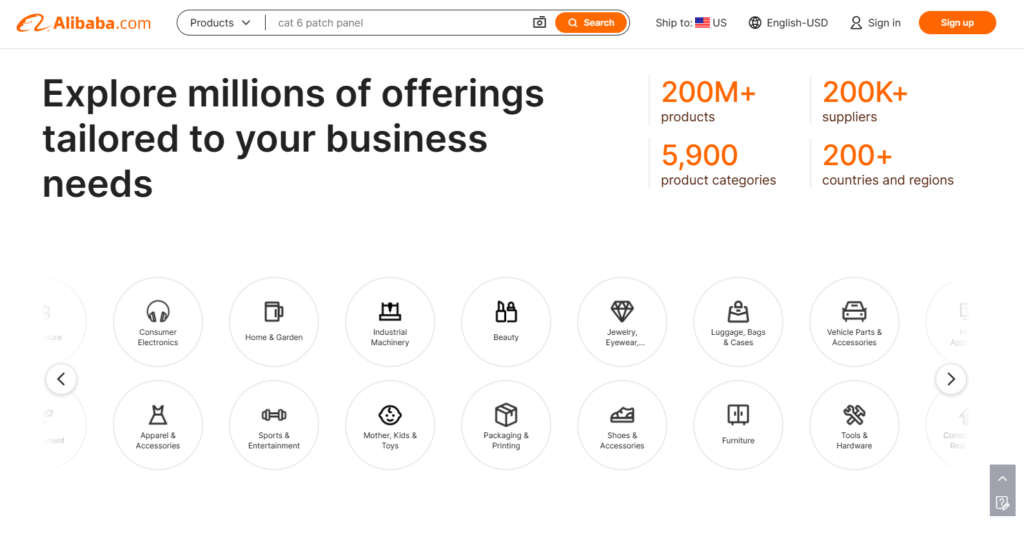
It is characterized by: High product quality: It provides high-quality products, from raw materials, and industrial products, to consumer products and so on. Strict supplier certification: It conducts strict certification and audits of suppliers to ensure the authenticity and reliability of suppliers. Support customization and negotiation: It supports users to customize products according to their own needs and can communicate and negotiate with suppliers online or offline.
It is suitable for the following types of users:
Medium and large wholesalers: those looking for large quantities of high-quality products for wholesale or distribution.
Professional Distributors: Those who have the experience and resources to conduct a distribution business, and focus on product quality and supply chain management.
Customized product demanders: Those who have special needs or want to create their own brand.
The top-ranked suppliers on the Alibaba platform are not necessarily really high-quality, because it mainly depends on which supplier pays more for advertising. Like AliExpress, it is not easy for Alibaba to have a clear difference from your competitors.
4.4 1688
Absolutely, this platform is a segment of the Alibaba Group, specifically designed to cater to wholesalers and distributors located within China. That’s why the whole website you see is in Chinese.
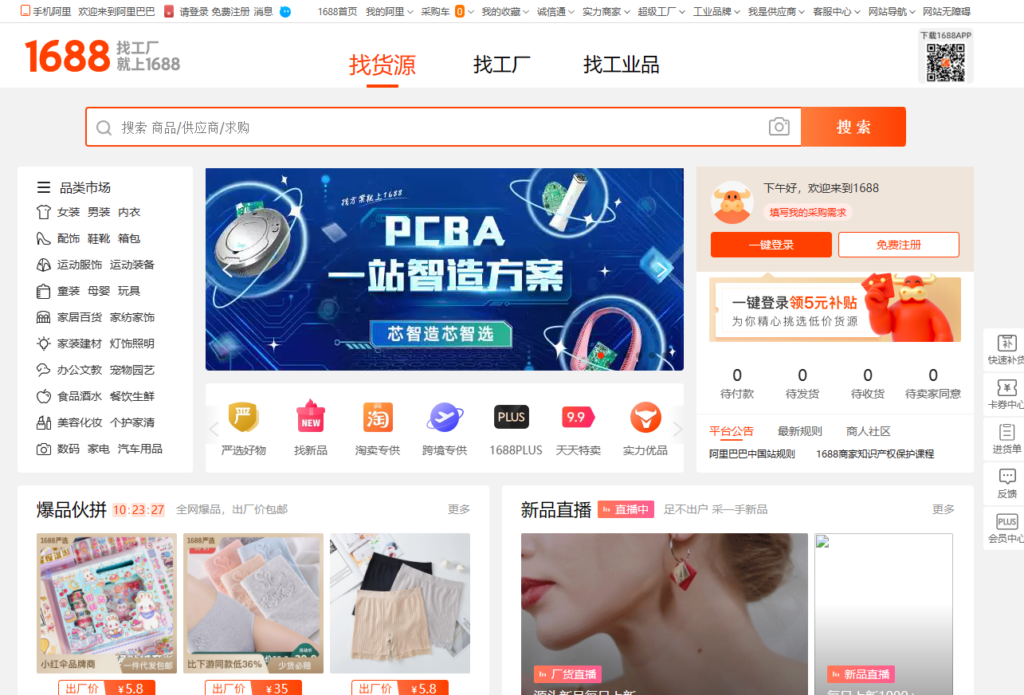
It’s known for its budget-friendly prices, providing a diverse selection of products at affordable rates. You can find everything from clothing, shoes, hats, and bags to cosmetics, everyday necessities, and even food items.
A large number of suppliers: It has more than 10 million suppliers, covering 168 industries and more than 3,600 categories. Support offline services: It supports users to obtain more services and support through offline service centers, logistics storage centers, financial service centers, etc.
It is suitable for the following types of users:
China Domestic Wholesalers: Those looking for low-priced products for wholesale or distribution.
Chinese domestic distributors: Those who have channels and resources for distribution business, and pay attention to product price and market competitiveness.
Offline service demanders: Those who need more offline services and support to keep their business running smoothly.
It is very difficult for dropshippers to access the 1688 website, and communication is troublesome.
4.5 Yiwugo
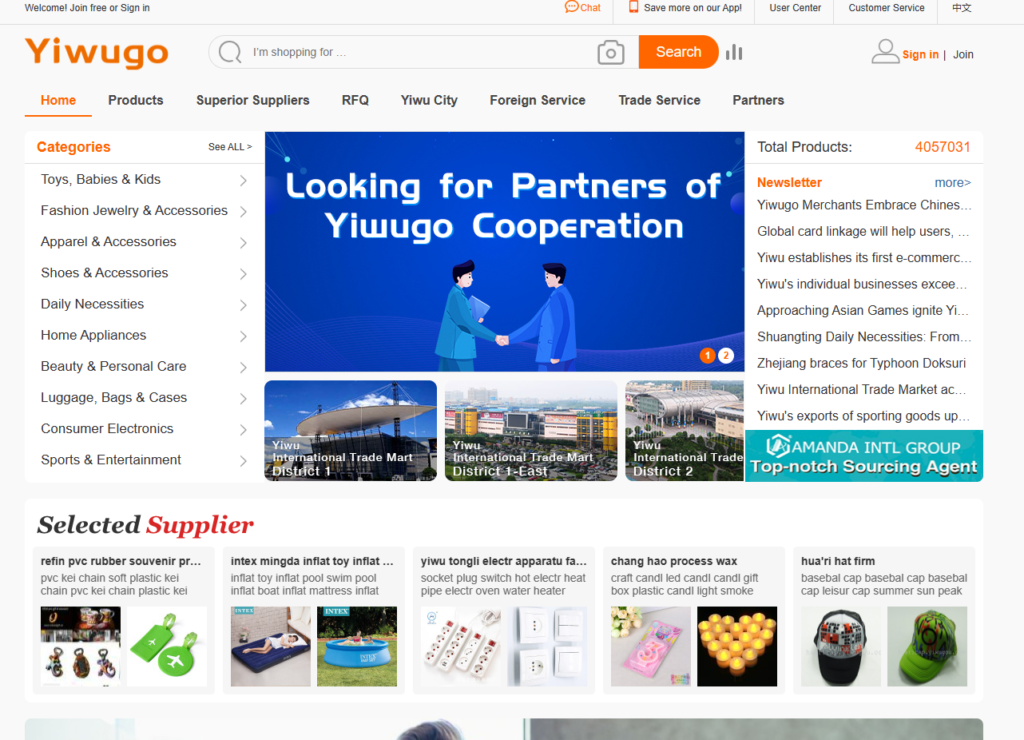
It mainly targets the buyers and sellers of the Yiwu small commodity market and mainly based on suppliers in Yiwu. Occasionally there will be some strange gadgets. It is also mainly in Chinese, you need an agent like me to help you communicate the details.
5. Visit suppliers
5.1 Trade Fairs
Canton Fair is the largest and most influential comprehensive trade fair in China. It is held in Guangzhou every spring and autumn and is divided into three phases, covering various industries and fields. You can think of the Canton Fair as this big entrance for China’s global trade scene – where heaps of buyers and flashy exhibitors come together from all over the world.

HKTDC exhibitions refer to various professional exhibitions sponsored or co-organized by the Hong Kong Trade Development Council, involving electronics, lighting, home furnishing, textiles, jewelry, fashion, food, and other fields. The HKTDC exhibition has quite the reputation – it’s known for its top-notch quality, impressive efficiency, and strong global presence. This event plays a major role as a key business hub, not only in Asia but also on a global level. You can visit the HKTDC Research website to view the latest exhibition information.
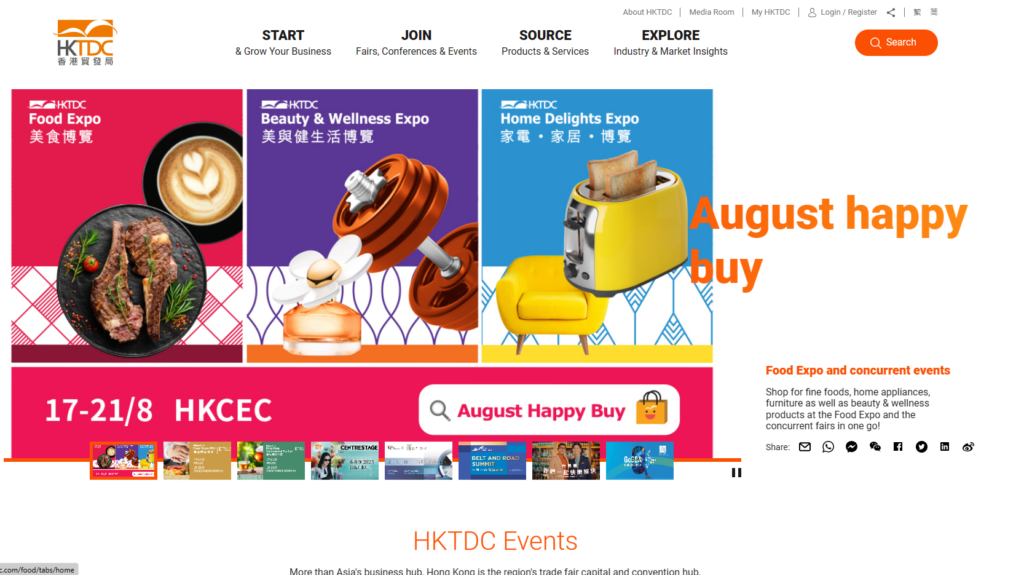
5.2 The origin of the product
China is at the forefront as a global manufacturing powerhouse. You can find almost any product you need in China because they have a diverse and advanced supply chain that covers various industries. China isn’t just a massive nation, it’s a real melting pot of diversity. Each region has its own special quirks and talents. Like, Shenzhen is the place for cutting-edge electronics, Hangzhou is all about luxurious silk, Fujian is steeped in tea culture, and Jingdezhen is where porcelain artistry reigns supreme.
| Industry Category | Location |
|---|---|
| Small Commodities | Yiwu City, Jinhua, Zhejiang Province |
| Electronic and Digital Products | Shenzhen City, Guangdong Province |
| Hardware Products | Yongkang City, Zhejiang Province |
| Packaging | Wenzhou City, Zhejiang Province |
| Textile | Yangtze River Delta Region, especially Jiangsu Province and Zhejiang Province |
| Raw Materials | Northeast Region, especially Heilongjiang Province and Liaoning Province. Jiangxi(food additives, such as non-dairy creamer)…… |
| Household Products | Shunde District, Foshan City, Guangdong Province |
| Personal Care Products | Dongguan City, Guangdong Province |
| Beauty Products | Guangzhou City, Guangdong Province |
It is difficult for novices to find places where various industries are concentrated. I can be your agent and help you find the products you need.
6. Dos and Don’ts when Finding a Reliable Supplier

6.1 Supplier Verification and Ratings:
When you’re picking a supplier, a big thing to think about is checking out their verification and ratings. You gotta ensure the supplier is legit and has a good rep. Here are some ways to do that:
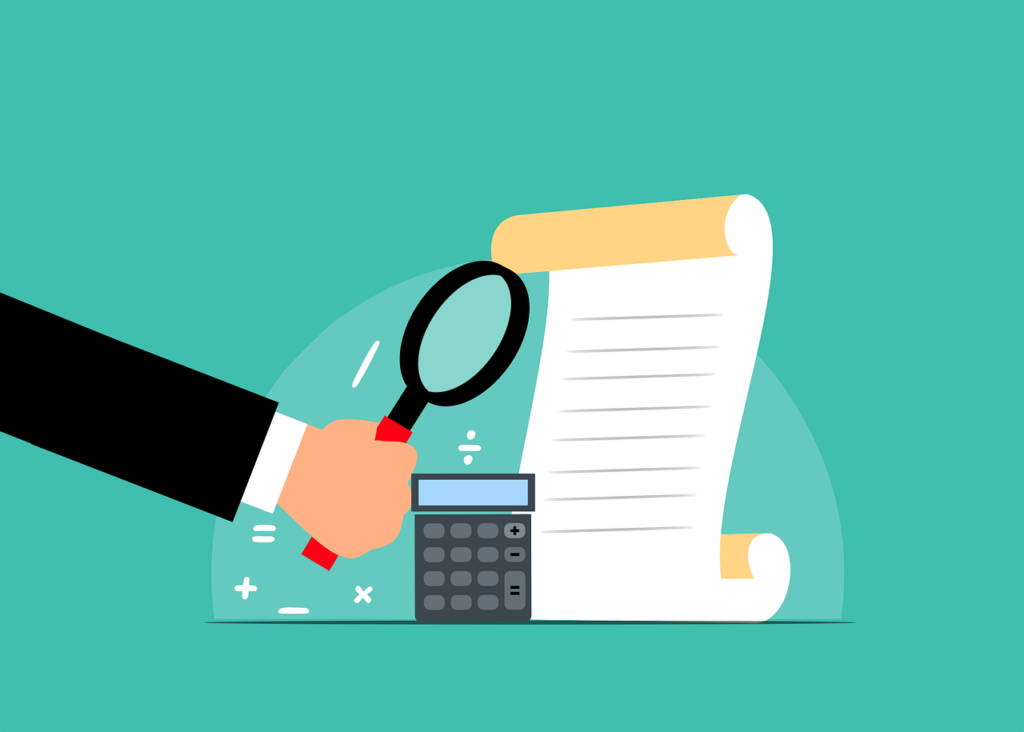
- Look for suppliers with high ratings and positive reviews from other buyers. This can indicate that the supplier has a good track record of delivering quality products and services.
- Check for seller verification badges or indicators of trust on the platform. Some platforms have their own verification systems or partner with third-party agencies to verify the identity, legitimacy, and credibility of the suppliers.
6.2 Communication:
Communication is another major deal-breaker when you’re sizing up suppliers. You want to make sure that the supplier is responsive and professional. Here are some ways to do that:

- Reach out to potential suppliers with questions or inquiries to assess their responsiveness and professionalism. Feel free to shoot them questions about their goods, how much they cost, the way they ship when you gotta pay – you name it.
- Having crystal-clear communication is like the secret sauce for building up a solid and trustworthy business partnership. You should communicate your expectations, requirements, and feedback clearly and respectfully with the supplier.
6.3 Product Quality:
Absolutely, don’t forget to double-check that the supplier’s bringing the A-game with top-notch products that live up to your standards and what you’re hoping for. Here are some ways to do that:

- Prioritize suppliers who offer detailed product descriptions, images, and specifications. Taking this step helps you paint a more vivid picture of the products – you can see how they look, how they function, and all the neat features they bring to the table.
- Request samples to evaluate the quality of products before making bulk orders. By doing so, you’re able to directly assess the quality, packaging, and overall presentation of the products firsthand.
6.4 Transparency:
You definitely want to make sure the supplier isn’t holding anything back when it comes to their pricing, shipping expenses, and the nitty-gritty of how the deal goes down. Here’s how you can make sure of that:
- Choose suppliers who provide clear pricing, shipping costs, and terms of sale. This can help you avoid any hidden fees or unclear payment terms that might cause problems later on.
- Avoid suppliers with hidden fees or unclear payment terms. This can indicate that the supplier is dishonest or unreliable.
6.5 Minimum Order Quantities (MOQs):
- Clarify MOQs with suppliers to ensure they align with your business needs and budget. You should ask them how many units or pieces you need to order at a time, and what discounts or incentives they offer for larger orders.
- Negotiate MOQs with suppliers if possible. You might be able to lower the MOQs or get better deals if you have a good relationship with the supplier or if you order frequently.
6.6 Payment Methods:
You gotta make sure you’re using safe and secure payment methods and platforms to keep your transactions protected. Here are some ways to do that:

- Opt for secure payment methods and platforms to safeguard your transactions. You should use methods or platforms that offer protection or guarantees in case of disputes, fraud, or non-delivery.
- Avoid payment methods or platforms that are risky or unsecured. You should avoid methods or platforms that do not offer protection or guarantees, or that require you to share sensitive information.
6.7 Shipping and Delivery Times:
You also wanna make sure that the supplier gets your products to you reliably and on time. Here are some ways to do that:

- Inquire about shipping options, estimated delivery times, and tracking capabilities. You could shoot them a question about what shipping tricks they’ve got up their sleeve, how quickly they’ll whisk your stuff away, and the lowdown on tracking your orders.
- Compare shipping options, estimated delivery times, and tracking capabilities among different suppliers. Go for the supplier that brings you the sweet spot of speed, cost, and trustworthiness.
6.8 Samples and Testing:
Getting samples and doing testing are super important steps to make sure you’re locking in a solid partnership with your supplier. Here are some ways to do that:

- Before establishing a partnership with the supplier, it’s essential to ask for samples. This lets you actually check out the quality, how well it’s made, and all the little details of the products yourself.
- Put those samples through the wringer to make sure they’re up to snuff with what you want. That might involve giving them a run for their money with performance checks, seeing how durable they are, and maybe even some other tests too.
6.9 Price is not key

You should not only focus on the low price but consider many aspects.
I once helped my client find 2 suitable suppliers, but he didn’t choose from the suppliers I helped him choose, but he chose the lower priced supplier himself. As a result, there were many problems with the goods delivered by the supplier to the consumer, which caused my client to lose a lot of money.
7. How do you approach manufacturers and ask them to partner with you for dropshipping?
Here are some tips that I share with you to contact manufacturers and convince them to work with you:
Research and Shortlist Manufacturers:
The first thing you need to do is to identify manufacturers who produce products that are relevant to your niche and your target market. You can use platforms like Alibaba, 1688, or Yiwugo to search for manufacturers by product category, location, rating, etc. You can also look for manufacturers who have experience or interest in dropshipping, as they are more likely to understand and accept this model. You can shortlist a few manufacturers who meet your criteria and who have good reviews and feedback from other buyers.

Prepare Your Pitch:
The next thing you need to do is craft a professional and compelling introduction that highlights your business, its strengths, and your interest in a dropshipping collaboration. You can write an email that explains who you are, what you do, what products you want to sell, and why you want to work with them. You can also clearly articulate the benefits of partnering with you, such as expanding their market reach, increasing their sales, and building a long-term relationship.
Contact Information:
The third thing is to find the appropriate contact details of the manufacturers that you want to reach out to. Look for email addresses or phone numbers that are specific to sales or business development departments, as they are more likely to respond and negotiate with you. You avoid using generic or automated contact forms or addresses, as they might not reach the right person or get ignored.

Initial Outreach:
The fourth thing is to send a personalized email to each manufacturer that you want to contact. Use a friendly and respectful tone, and address them by their name or title if possible. Introduce yourself, your business, and your intent to explore a dropshipping partnership with them. Express enthusiasm for their products and highlight how they fit with your target market and niche.
8. Summarization
Finding a reliable supplier is something that many dropshippers need to do. In this article, I share my own experience with you, hoping to help you.
In terms of the supply chain, as long as you find a reliable supplier, you will not be far from success.
If you need our private dropshipping service, please contact us now.
Want to get the best price from the manufacturer? Fulfill your orders fast and stable?
I’m Cassiel, assist you grow your Shopify business rapidly, start with your order fulfillment quickly now.
Join to newsletter.
Follow us and get more knowledge.
